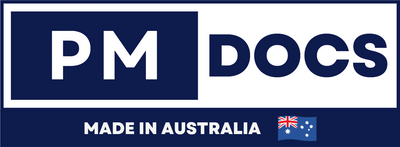What Is ISO Accreditation In Australia?
Unlocking Excellence: What Is ISO Accreditation In Australia?
In today's interconnected global economy, trust, quality, and consistency are non-negotiable. For Australian businesses looking to build a robust reputation, enhance efficiency, and gain a competitive edge, the terms "ISO" and "Accreditation" often surface. But what exactly do they mean, especially in the Australian context?

This long-form blog post will demystify ISO accreditation, explaining its core principles, its significance for Australian organisations, and the process involved in achieving this hallmark of quality.
The Global Standard Setter: What Is ISO?
Let's start with the basics. ISO stands for the International Organization for Standardization. It's an independent, non-governmental international organisation with a membership of 170 national standard bodies. Its primary role is to develop and publish international standards that ensure products, services, and systems are safe, reliable, and of good quality.
It's crucial to understand that ISO itself does not perform certification or accreditation. Instead, it develops the standards (e.g., ISO 9001 for quality management, ISO 14001 for environmental management) that organisations can then choose to implement and get certified against.
These standards cover an enormous range of activities, from quality management and environmental performance to information security and occupational health and safety. For Australian businesses, adopting these international best practices offers a pathway to global recognition and operational excellence.
To illustrate the breadth of ISO's influence, here's a look at some of the most commonly sought ISO standards relevant to Australian businesses:
| ISO Standard | Primary Focus Area | Key Benefits for Businesses |
|---|---|---|
| ISO 9001 | Quality Management Systems | Improved customer satisfaction, enhanced process efficiency, reduced waste, better decision-making. |
| ISO 14001 | Environmental Management Systems | Reduced environmental impact, improved regulatory compliance, enhanced reputation, cost savings through resource efficiency. |
| ISO 27001 | Information Security Management Systems | Enhanced data protection, reduced cyber risks, improved business continuity, increased stakeholder trust. |
| ISO 45001 | Occupational Health & Safety Management Systems | Improved workplace safety, reduced incidents and accidents, compliance with WHS regulations, boosted employee morale. |
| ISO 22000 | Food Safety Management Systems | Ensures food safety throughout the supply chain, compliance with food safety regulations, increased consumer trust. |
| ISO 50001 | Energy Management Systems | Improved energy efficiency, reduced energy costs, lowered greenhouse gas emissions, greater sustainability. |
The Crucial Role: What Is Accreditation?
While ISO creates the standards, and organisations get "certified" against them, the term "accreditation" plays a vital role in ensuring the legitimacy and integrity of the entire system.
Accreditation is the formal recognition by an authoritative body that a certification body (the entity that audits your business and issues an ISO certificate) is competent to carry out specific conformity assessment tasks. In simpler terms, it's the "auditor of the auditors."
Think of it this way: anyone can claim to be an expert and issue a certificate. But for that certificate to hold international credibility and value, the issuer (the certification body) must also have been rigorously assessed by an independent, highly respected authority – the accreditation body. This creates a chain of trust:
ISO Standard → Accreditation Body → Certification Body → Your Organisation (Certified)
In Australia, the primary bodies responsible for accreditation are:
| Australian Accreditation Body | Primary Focus/Role | Key Point |
|---|---|---|
| JAS-ANZ | Joint Accreditation System of Australia and New Zealand is the government-appointed body for accrediting certification bodies in the fields of management systems (like ISO 9001, 14001, 45001, 27001), product certification, and personnel certification across Australia and New Zealand. | Ensures the competence and impartiality of organisations that certify management systems. |
| NATA | National Association of Testing Authorities, Australia is the recognised authority for accrediting laboratories, inspection bodies, and reference material producers. | Ensures the technical competence of testing and calibration facilities, crucial for many industries. |
When an Australian business seeks ISO certification, it should always engage a certification body that is accredited by JAS-ANZ. This ensures that the audit process is thorough, impartial, and globally recognised, adding significant weight to your ISO certificate.
ISO Certification vs. ISO Accreditation: Clarifying The Distinction
This is a common point of confusion, so let's break it down clearly:
-
ISO Certification: This is what your organisation achieves. It means an independent, third-party certification body has audited your management system (e.g., your quality management system) and confirmed that it meets the requirements of a specific ISO standard (e.g., ISO 9001). You receive an ISO certificate as proof.
- ISO Accreditation: This is what a certification body achieves. It means an authoritative body (like JAS-ANZ in Australia) has assessed the certification body and determined that it is technically competent and impartial to perform ISO certification audits.
Analogy: Imagine you need a driving license. The ISO standard is like the road rules and driving test criteria. The certification body is the driving instructor and examiner who assesses your skills. Your ISO certification is your driving license. The accreditation body is the government transport department that verifies the driving instructor/examiner is qualified and competent to conduct tests. You want your driving license issued by an examiner who is officially recognised, right? The same applies to ISO certification.
The Unmistakable Benefits: Why Pursue ISO Certification In Australia?
For Australian businesses, achieving ISO certification through an accredited body brings a multitude of tangible advantages. These benefits extend both internally, optimising operations, and externally, enhancing market position.
Here are some key benefits:
-
1. Enhanced Operational Efficiency:
-
Process Improvement: ISO standards encourage a systematic approach to processes, leading to clearer procedures, reduced errors, and greater consistency.
-
Resource Optimisation: By identifying inefficiencies and waste, businesses can better manage resources, leading to cost savings.
-
Process Improvement: ISO standards encourage a systematic approach to processes, leading to clearer procedures, reduced errors, and greater consistency.
-
2. Improved Customer Satisfaction & Trust:
-
Consistent Quality: Customers can be confident that products or services consistently meet specified standards.
-
Stronger Relationships: Demonstrating a commitment to quality and customer focus builds trust and loyalty.
-
Consistent Quality: Customers can be confident that products or services consistently meet specified standards.
-
3. Market Access & Competitive Advantage:
-
Tender Requirements: Many government contracts and large corporate tenders in Australia require ISO certification as a prerequisite.
-
Global Recognition: An internationally recognised ISO certificate opens doors to new markets and strengthens your position against competitors.
-
Supply Chain Confidence: Being ISO certified signals reliability to potential partners and suppliers.
-
Tender Requirements: Many government contracts and large corporate tenders in Australia require ISO certification as a prerequisite.
-
4. Robust Risk Management:
-
Proactive Issue Resolution: ISO standards promote identifying and addressing potential risks before they escalate, improving resilience.
-
Compliance Assurance: Helps ensure adherence to relevant legal and regulatory requirements, reducing the risk of fines or penalties.
-
Proactive Issue Resolution: ISO standards promote identifying and addressing potential risks before they escalate, improving resilience.
-
5. Boosted Employee Morale & Engagement:
-
Clear Roles & Responsibilities: Employees understand their contribution to quality and improvement, fostering a sense of purpose.
-
Improved Training: Standardised processes often lead to better training programs and a more competent workforce.
-
Clear Roles & Responsibilities: Employees understand their contribution to quality and improvement, fostering a sense of purpose.
-
6. Continuous Improvement Culture:
-
Measurement & Monitoring: ISO's emphasis on data collection and performance measurement drives ongoing improvement.
- Adaptability: The framework encourages regular review and adaptation, ensuring the business remains agile and responsive to change.
-
Measurement & Monitoring: ISO's emphasis on data collection and performance measurement drives ongoing improvement.
The Journey To ISO Certification In Australia: A Step-by-Step Guide
The path to ISO certification involves commitment and effort, but it's a structured process that yields significant rewards. Here's a general outline of the steps an Australian business would typically follow:
-
Commitment & Planning:
-
Management Buy-in: Secure top management's commitment and allocate necessary resources.
-
Scope Definition: Clearly define the scope of your management system (what parts of your organisation and operations will be covered).
-
Management Buy-in: Secure top management's commitment and allocate necessary resources.
-
Gap Analysis & Review:
- Conduct an initial assessment to identify what your current systems already achieve and where there are gaps against the requirements of the chosen ISO standard.
- Conduct an initial assessment to identify what your current systems already achieve and where there are gaps against the requirements of the chosen ISO standard.
-
System Design & Documentation:
- Develop or refine your management system to meet the ISO standard's requirements. This involves documenting policies, procedures, work instructions, and records.
- Develop or refine your management system to meet the ISO standard's requirements. This involves documenting policies, procedures, work instructions, and records.
-
Implementation & Training:
- Roll out the new or revised system across your organisation. Train your employees on the new procedures and their roles within the system.
- Roll out the new or revised system across your organisation. Train your employees on the new procedures and their roles within the system.
-
Internal Audit:
- Conduct internal audits to verify that your management system is effectively implemented and maintained, and that it meets the requirements of the ISO standard.
- Conduct internal audits to verify that your management system is effectively implemented and maintained, and that it meets the requirements of the ISO standard.
-
Management Review:
- Top management formally reviews the performance of the management system, ensuring its ongoing suitability, adequacy, and effectiveness.
- Top management formally reviews the performance of the management system, ensuring its ongoing suitability, adequacy, and effectiveness.
-
Certification Audit (by an Accredited Certification Body):
-
Stage 1 Audit (Document Review): The certification body reviews your documented management system to ensure it meets the standard's requirements on paper.
-
Stage 2 Audit (On-site Assessment): The certification body conducts an on-site audit to verify that your management system is effectively implemented and operating in practice. If successful, you receive your ISO certificate!
-
Stage 1 Audit (Document Review): The certification body reviews your documented management system to ensure it meets the standard's requirements on paper.
-
Surveillance Audits:
- After initial certification, accredited certification bodies conduct annual surveillance audits to ensure ongoing compliance and continuous improvement.
- After initial certification, accredited certification bodies conduct annual surveillance audits to ensure ongoing compliance and continuous improvement.
-
Re-certification:
- Typically every three years, a re-certification audit is carried out to renew your ISO certificate.
Choosing Your Partner: Selecting An Accredited Certification Body
When you're ready to pursue ISO certification, the choice of your certification body is critical. Always ensure they are accredited by JAS-ANZ (or another internationally recognised accreditation body if operating globally). This guarantees their competence, impartiality, and adherence to international auditing standards.
Look for a certification body that:
- Holds current JAS-ANZ accreditation for the specific ISO standard(s) you are pursuing.
- Has experience in your industry.
- Offers clear communication and support throughout the process.
- Provides qualified and professional auditors.
Conclusion
ISO accreditation, specifically the process of achieving ISO certification through a JAS-ANZ accredited body in Australia, is more than just a badge of honour. It's a strategic investment in your organisation's future. It signifies a profound commitment to quality, efficiency, security, and continuous improvement, providing a solid foundation for sustainable growth and a distinct competitive advantage in both the Australian and global marketplaces.
By understanding the distinct roles of ISO, accreditation bodies like JAS-ANZ, and certification bodies, Australian businesses can confidently navigate the journey towards unlocking excellence and building a reputation that stands the test of time.




